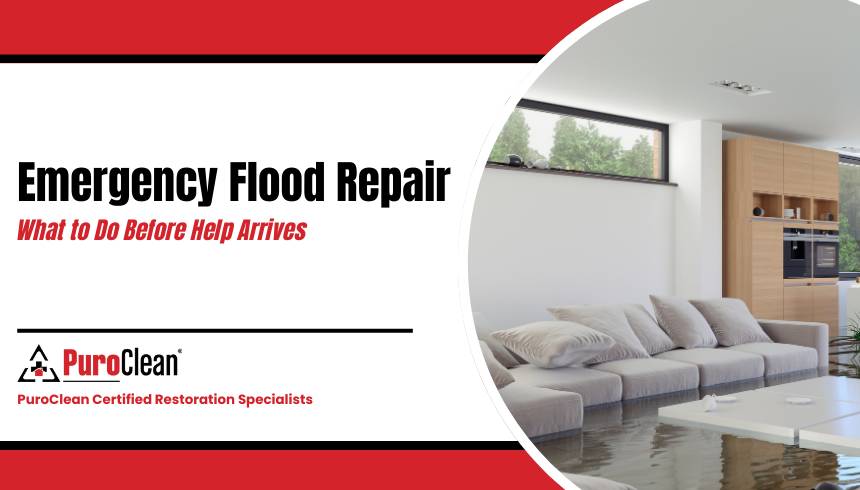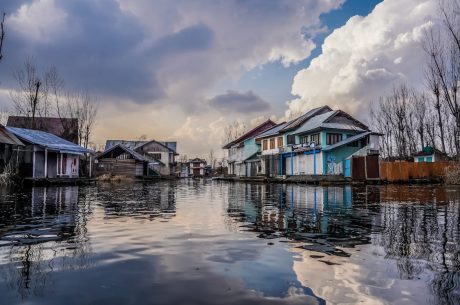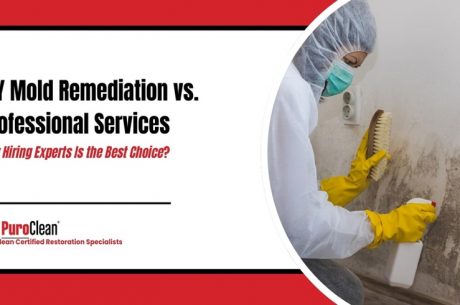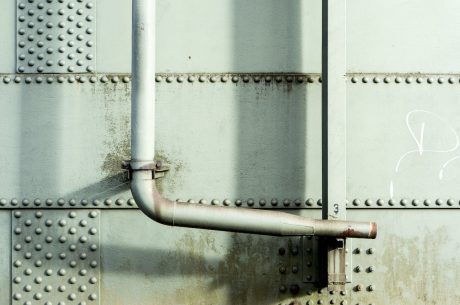Emergency flood repair is all about acting fast when water unexpectedly invades your home. It involves quick steps to remove water, dry out spaces, and fix damages to stop problems like mold and structural weakening from getting worse. Taking the right actions early on can save you a lot of stress, money, and long-term damage. Knowing what to do before help arrives helps protect your safety and your belongings during a tough time.
In this blog post, you’ll learn key steps to handle flooding safely while waiting for professionals. From shutting off utilities to documenting damage, these simple actions make a big difference. Understanding how to prepare also sets the stage for effective water damage restoration later on, helping your home recover as smoothly and quickly as possible.
What Is Emergency Flood Repair, and Why Is It Important?
Emergency flood repair refers to the immediate response and actions taken to mitigate water damage after a flood. It includes water extraction, drying, sanitizing, and structural repairs to prevent mold growth and further deterioration. This service is crucial because delays can lead to more extensive damage, higher repair costs, and health hazards due to contaminated water. Fast action ensures safety, preserves property integrity, and speeds up recovery. Professional flood repair minimizes disruption and restores normalcy as quickly as possible.
7 Important Things to Do Before Emergency Flood Repair Help Arrives
When flooding strikes your home, acting quickly can significantly reduce damage while you wait for professionals to arrive. Preparing in the right way not only protects your belongings but also ensures your safety and the effectiveness of future repairs. Here’s what you should prioritize:
1. Turn Off Electricity and Gas if Safe
If it’s safe, shut off power and gas at the main switches. Water and electricity are a deadly mix, and even a small spark can lead to disaster. Avoid touching electrical sources while standing in water. If unsure, wait for professionals. Taking early action prevents fire hazards and helps protect anyone entering the property. Always prioritize safety over speed when dealing with utilities, especially in wet conditions. This step can significantly lower the risk of further harm.
2. Move Valuables to a Higher Level
Act quickly to relocate essential items—documents, electronics, keepsakes—to higher ground. Water can cause irreversible damage in minutes. Use plastic containers or bags for added protection. If upstairs storage isn’t an option, stack items on sturdy furniture. Avoid lifting anything too heavy. Focus on what’s irreplaceable and easy to carry. Doing this can help preserve personal belongings that hold sentimental or financial value, making recovery easier once cleanup begins and water is finally under control.
3. Document the Damage
Take pictures and videos of everything impacted: walls, floors, furniture, and belongings. Visual proof is vital for insurance claims. Aim for clear, time-stamped photos from multiple angles. Don’t clean or throw anything away until documentation is complete. Keep notes about what was lost or damaged. This step helps speed up claims and ensures you’re fairly compensated. Detailed records also guide professionals later in determining what materials need full replacement or further inspection after the water recedes.
4. Remove What You Can
Safely take out smaller soaked items like rugs, curtains, and loose cushions. These tend to hold moisture and can quickly grow mold. Move them to a dry, ventilated space. Wear gloves and waterproof boots to protect yourself. Avoid dragging heavy, waterlogged items that could injure you. Even small efforts make a difference in reducing odor, mold risk, and further damage. Think of this step as an initial buffer before a thorough, deeper cleaning and drying process begins.
5. Open Windows for Ventilation
Improving airflow slows down mold and helps with moisture control. Open windows and doors if the weather is safe. Use fans to keep air moving, but don’t run central air systems yet—they may spread contaminants. Fresh air reduces musty smells and creates a safer environment. While this won’t fix the problem completely, it buys time and keeps conditions from getting worse. Ventilation is a simple, helpful way to stabilize your space while waiting for assistance.
6. Avoid Contaminated Water Areas
Floodwaters often carry harmful substances like sewage, chemicals, and debris. Avoid wading through standing water unless absolutely necessary, and wear protective gear if you must enter. Keep pets and children far from flooded zones. Contaminated water can cause skin irritation, infections, or illness. Stay in dry, safe areas until help arrives. Limiting exposure is crucial for your health and safety before professional emergency flood repair teams can properly sanitize and remove the affected water and materials.
7. Call Your Insurance Company
Contact your insurance provider as soon as possible to begin the claims process. Provide detailed photos and notes on the damage. Ask about what’s covered and what paperwork is needed. Early communication helps prevent delays and ensures your emergency flood repair costs are eligible for reimbursement. Your insurer may also recommend certified contractors. Prompt action reduces stress, sets clear expectations, and speeds up your road to recovery once professional restoration services begin repairing your property.
Frequently Asked Questions
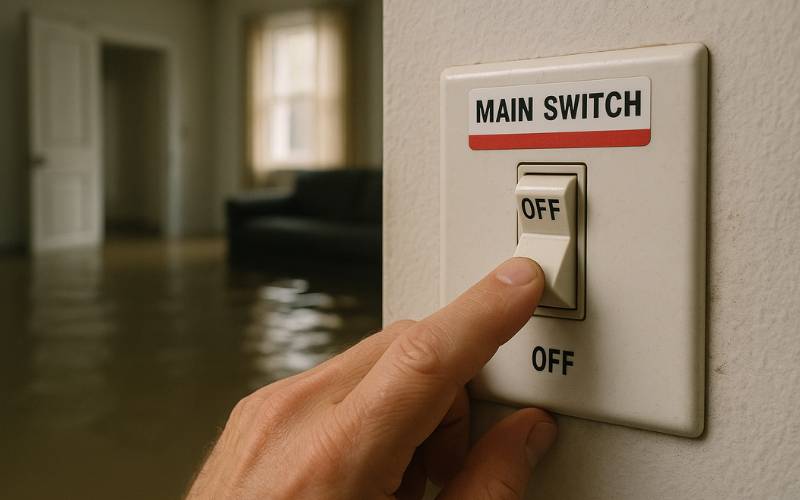
What are common hidden damages caused by flooding?
Floodwaters can weaken foundations, damage electrical wiring, and promote hidden mold growth inside walls and flooring. These issues may not be immediately visible but can lead to costly repairs and health hazards later. Professional flood repair teams use specialized tools to detect and address such hidden damage effectively.
What equipment do professionals use for emergency flood repair?
Experts use water extractors, industrial dehumidifiers, air movers, moisture meters, and antimicrobial treatments. These tools efficiently remove water, dry materials, and prevent mold growth. Advanced equipment ensures a thorough restoration process, addressing hidden moisture and structural issues that homeowners typically can’t handle on their own.
How can I prevent future flood damage after repairs?
To reduce future flood risk, consider installing sump pumps, sealing foundation cracks, elevating utilities, and improving drainage around your property. Regular maintenance and flood-proofing measures can minimize water intrusion. Consulting with restoration specialists can also help identify vulnerabilities and recommend solutions tailored to your home’s location and design.
Final Thoughts
Taking immediate, thoughtful steps before emergency flood repair help arrives can protect your home and health from worsening damage. Acting quickly to secure utilities, move valuables, and document damage sets the foundation for a smoother restoration process. Remember, professional intervention is essential to fully restore your property and prevent long-term issues like mold and structural damage.
If you’re facing flood damage, PuroClean Zephyrhills is here to help with expert water damage restoration services. Contact us today for fast, reliable assistance to get your home back to normal quickly and safely. Don’t wait—let our experienced team handle the cleanup and repairs you need.
